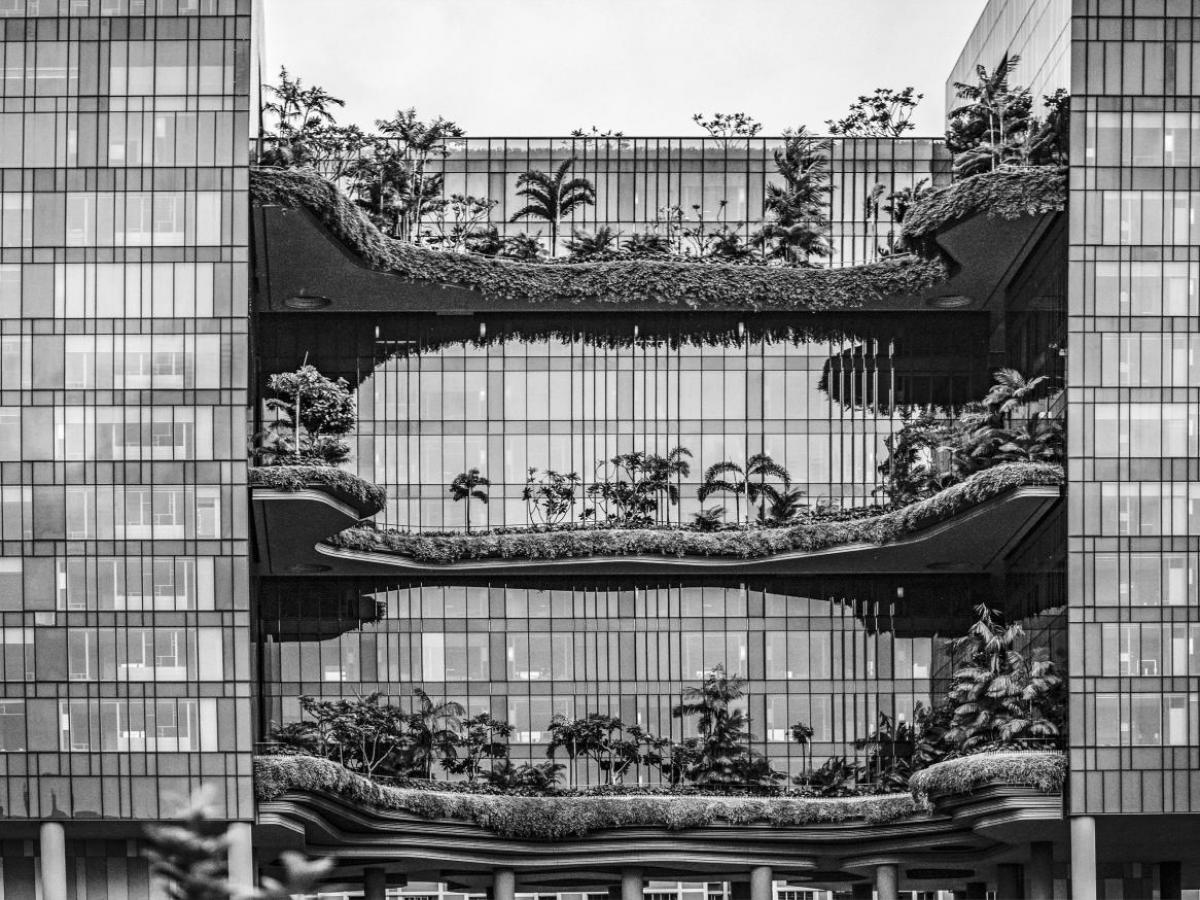Environment, Landscape and Building
Grounded in architectural science and interdisciplinary research, this cluster focuses on advancing knowledge to plan, design, operate, and manage our built environment. This is to ensure that not only will landscapes and buildings contribute positively to the environment, they will also improve the quality of life for children to grow well, for adults to work well, and for older people to age well.

Increasing occurrence of weather extremes and urbanisation have put pressures on resource availability and the quality of our living environment. Building designs are being affected by these as much as having significant roles to improve quality of life without having to take away natural resources. Existing frameworks and strategies have focused on minimizing energy use and subsequent carbon emissions from building operation, and, to a lesser extent, from building construction activities, but only start to address the relationships between the environment, buildings, energy and other resources, and people’s health and wellbeing.
Our research
Our researchers in this cluster are working on a range of research relating to the environment and buildings, including:
- Mitigation and adaptation to extreme weather conditions in the building and urban scale and the city
- Low to zero energy and carbon building design
- Indoor and outdoor thermal comfort
- All-age friendly urban and building design
- Remote sensing, urban modelling and spatial data science
- Building and landscape performance simulation and building monitoring
Learn more about our research experts
-
Lead researchers in this area are currently focused on
- Impact of wind on outdoor thermal comfort (Dr Ehsan Sharifi)
- Improving thermal comfort and wellbeing of older South Australians (Professor Veronica Soebarto)
- Public open and green space for older people (Professor Veronica Soebarto / Professor James Hayter)
- Improving simulation-based assessment methods of building design (Veronica Soebarto / Terence Williamson)
- Mapping and classifying green infrastructure (Dr Ehsan Sharifi / Dr Carlos Bartesaghi Koc / Dr Scott Hawken)
- Green infrastructure simulation and digital twins (Dr Scott Hawken / Dr Carlos Bartesaghi Koc)
- Urban development and megaprojects (Dr Scott Hawken)
- Sustainable housing design (Professor Veronica Soebarto / Dr David Kroll / Dr Ehsan Sharifi)
- Applied design and fabrication research (Dr David Kroll)
- Sustainability and adaptive reuse of built heritage (Dr David Kroll / Dr Ehsan Sharifi / Dr Scott Hawken)
- Smart cities (Dr Scott Hawken)
-
Recent and current funded research projects
- Developing Resilient Housing for Low Socio-Economic Older People, Soebarto and Williamson, ARC Discovery (2022-2024)
- Determining the social value of extreme, mixed-use urban developments, Soebarto and Kroll, ARC Linkage (2021-2024)
- Addressing overheating and occupant behavioural setting: Improving NatHERS rating in climate zone 4, Soebarto and Williamson, CSIRO (2022-2024)
- Human Thermal Comfort and Environmental Analysis of the Edwardstown Industrial Precinct (2020) – Sharifi, Koc, Soebarto, with Edge Consulting, funded by Marion City Council
- Citizen Science for Creating a Greener Adelaide (2019-2020) – Soebarto, with Hugo Centre for Population and Housing, funded by SA Health
- Improving thermal comfort of older South Australians – Soebarto, ARC Discovery (2018-2020)
- Planning and design of public spaces to support ageing well – Soebarto, University Interdisciplinary Research Fund (2016-2017)
- Cooling capacity of urban greenery – Sharifi, Industry Fund by Adelaide City Council and Renewal SA (2017)
- Thermal photography of City of Adelaide – Sharifi, Industry Fund by Adelaide City Council (2016)
- A microclimate and urban heat island mitigation decision-support tool – Ding, Santamouris, Osmond, Peters and others, CRC for Low Carbon Living (2017)
-
Researchers in this cluster
Partner with us
Collaborate with our world-class researchers, academics and highly sought after higher degree students.
